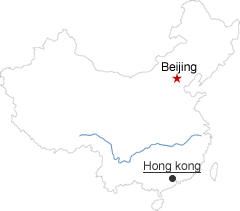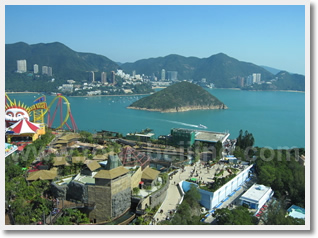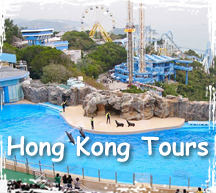Hongkong Travel Guide
 Location: It is in the southeast of Zhujiang River.
Location: It is in the southeast of Zhujiang River.
Population: 6,800,000
Area: 1,104 square kilometer
History: The bustling city of Hong Kong was just a collection of fishing villages when claimed by Britain in 1842 following the First Opium War with China. This failed attempt by the Ching Dynasty to stop the British trading in opium led to Hong Kong being ceded to Britain under the Treaty of Nanking that year. The Kowloon Peninsula was handed over in 1860 and a 99-year lease on the New Territories, comprising the area north of Kowloon up to the Shenzhen River plus 235 outlying islands, was granted in 1898.
Under the unique principle of 'One Country, Two Systems', Hong Kong returned to Chinese sovereignty on 1 July 1997 as a Special Administrative Region of the People's Republic of China. This arrangement allows Hong Kong to enjoy a high degree of autonomy, retaining its capitalist system, independent judiciary and rule of law, free trade and freedom of speech.
Hong Kong's magnificent harbour has been the key to its development as a trading port and entrepôt for China, progressing through an industrial era to become a leading financial and services centre in Asia. The unique blend of eastern and western influences, matched by diverse attractions and stunning countryside, has also made Hong Kong Asia's prime tourist destination.
Climate: Hong Kong has a sub-tropical climate, being temperate for nearly half the year, with cool, dry winters and hot, humid summers. The annual rainfall ranges from around 1300 millimetres to more than 3000 millimetres. About 80 percent of the rain falls between May and September. The wettest month is August, when rain occurs about four days out of seven and the average monthly rainfall at the Observatory is 391.4 millimetres. The driest month is January, when the monthly average is only 23.4 millimetres and rain falls only about six days a month.
Transportation: Airline-There are scheduled flights or regular charted planes available at Hongkong for the large domestic cities. The new airport is 40km away from the urban area and you can go there by subway or airport bus.
Railway-Beijing, Shanghai, Guangzhou and Zhaoqing all have trains for Hongkong.
Highway- There are a total of 1,831km of paved highway in Hongkong. These roads are built to British standards with maximum of three lanes with hard shoulders.
Local Specialities: cosmetic, bijouterie
Local Food: Dim Sum, Seafood, Hongkong Herbal Tea, Soup, Ting Zai Prridge
 |
 ; ; |
Questions & Answers:




